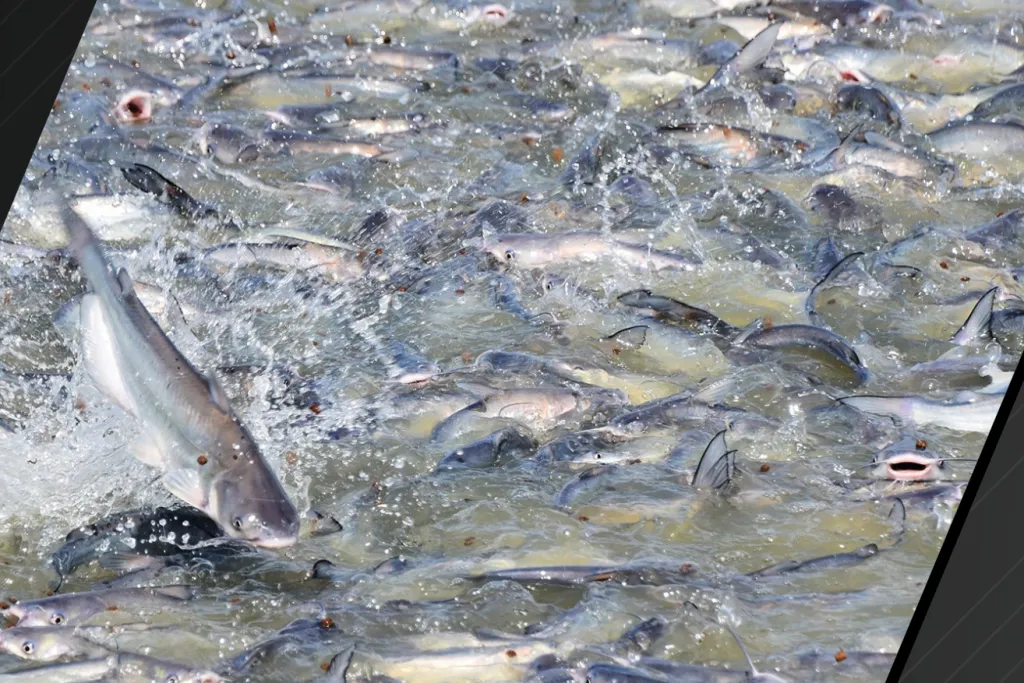Catfish growers in the United States had sales of $421 million during 2021, up 12% from $377 million the previous year, according to USDA’s National Agricultural Statistical Service. The top four states (Mississippi, Alabama, Arkansas and Texas) accounted for 97% of U.S. total sales.
With support from USDA’s National Institute of Food and Agriculture, researchers at Land-grant Universities are conducting research that supports the catfish industry (the largest component of U.S. aquaculture) and helping to build a more resilient food system.
Understanding the Effect of Elevated Water Hardness in Catfish Aquaculture
In Arkansas, the birthplace of the commercial catfish industry, University of Arkansas at Pine Bluff scientists have discovered the level of water hardness that is lethal to channel catfish. Hardness is one of the integral water quality parameters that determines the success of aquaculture endeavors. Proper water hardness is required for bone development, blood coagulation, enzyme activity, eggshell integrity and embryonic development in fish. Most fish species perform well over a wide range of hardness values, but may suffer when hardness values are too low or too high. Optimal requirements are often species-specific.
In Southern states, including Arkansas, fish producers encounter significant changes in total hardness due to water evaporation during summer months or due to pond water dilution during periods of high precipitation. This eventually effects overall fish productivity. For successful fish farming, it is important that elevated hardness should remain within the safe range of the cultured fish species. However, information regarding maximum safe tolerance level to hardness is lacking for catfish or any other fish.
Researchers found that, despite channel catfish having ways to cope with high hardness, exposure to calcium carbonate levels of 1500 mg/L and above was detrimental. The results provide a guideline for the “maximum level” of hardness that a farmer can safely increase in a catfish aquaculture system. As such, the result of this work can be applied in aquafarming worldwide.
Preventing Losses in Catfish Aquaculture Due to Algal Toxicosis
Fish losses attributed to toxic algae episodes continues to be an important issue facing Arkansas aquaculture. During the late 1990s, Arkansas catfish producers annually lost an estimated $900,000 worth of catfish attributed to this problem. Today, these losses would be equivalent to $1.68 million.
Taking a proactive approach, the University of Arkansas at Pine Bluff’s aquaculture/fisheries program instituted an algal monitoring program. This program continues to the present date. An Extension specialist visits farms weekly during the production season, for 40 or more weeks. Algal samples are collected weekly from approximately 166 ponds. The samples are examined microscopically with the presence and abundance of the algae, Aphanocapsa, noted. When the population of the algae exceeds an estimated 5 million cells per liter, treatment with an approved algicide is recommended. In some cases, flushing the affected ponds with massive quantities of water from adjacent ponds has also worked to diminish the number of the culprit algae.
Over 2,800 algal samples were processed during the 2021 production season. Pond owners were advised to treat the algae on 10 occasions. The program was successful during 2021. There were no economic losses attributed to algal toxicosis. Treating the affected ponds saved an estimated $200,000 worth of catfish.
Top photo: Left image of catfish producers holding a caught catfish. Right image of catfish swimming. Images courtesy of Adobe Stock.

